The Québec maritime Blog
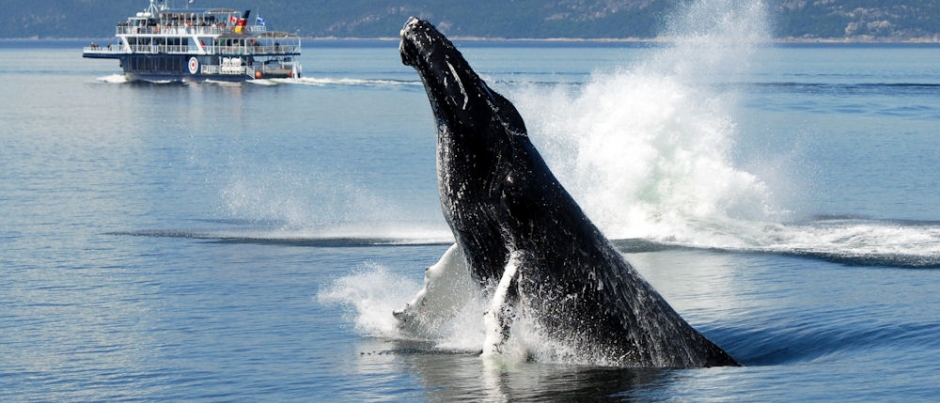
- Jean-Pierre Sylvestre
Whale-Watching Sites in the Maritime Regions of Québec
The maritime regions of Québec offer some of the best sites in Canada to observe whales and other marine mammals: in fact, 13 different species of cetaceans can be seen in our regions. (Read this blog post for tips to help you identify them.) When planning your next trip to Eastern Québec, be sure to include this activity on your itinerary. Watching whales is a thrilling experience that will delight visitors of all ages!
When and where to observe whales in Eastern Québec
Beginning during capelin migration in mid-spring, many of the great cetaceans follow schools of fish to gorge themselves after several months of fasting in the subtropical waters of the North Atlantic. The whales thus spend the summer feeding in the cold waters of the St. Lawrence and in subarctic waters and then migrate to subtropical and warm temperate waters to reproduce. During their migration, the whales travel far into the St. Lawrence, dispersing in the Gulf and continuing their journey into the Upper Estuary (as far as Rivière-du-Loup on the south shore and Saint-Siméon on the north shore). Some areas are rich in plankton and other tiny marine organisms that attract fish, which are the whales’ favourite prey. These ideal whale-watching sites were identified decades ago and can be found throughout the maritime regions of Québec.
Côte-Nord
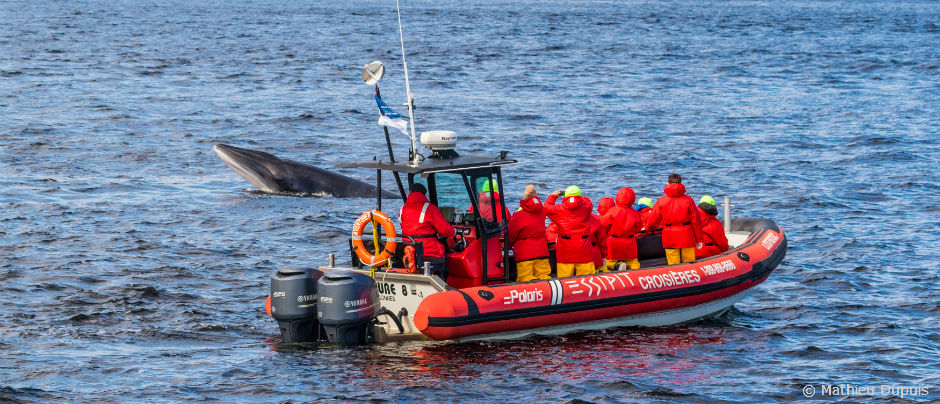
Home to a high concentration of whales and other marine mammals, the area surrounding the Saguenay–St. Lawrence Marine Park, which includes the mouth of the Saguenay Fjord and the villages of Tadoussac, Les Bergeronnes and Les Escoumins, is the best place to observe marine mammals along the St. Lawrence Estuary. The species you are most likely to spot in this area are minke whales, fin whales, humpbacks and harbour porpoises. Several blue whales (an endangered species) are also found in these waters. The seabed relief forces cold waters from the depths of the Laurentian Channel to rise to the surface, pushing up plankton and fish by the thousands, which attracts large marine mammals close enough to the shore for people to observe them easily. Several companies offer whale-watching excursions by sightseeing boat, Zodiac or sea kayak departing from Tadoussac (Croisières AML) and Les Bergeronnes (Essipit Cruises and Mer et Monde Écotours).
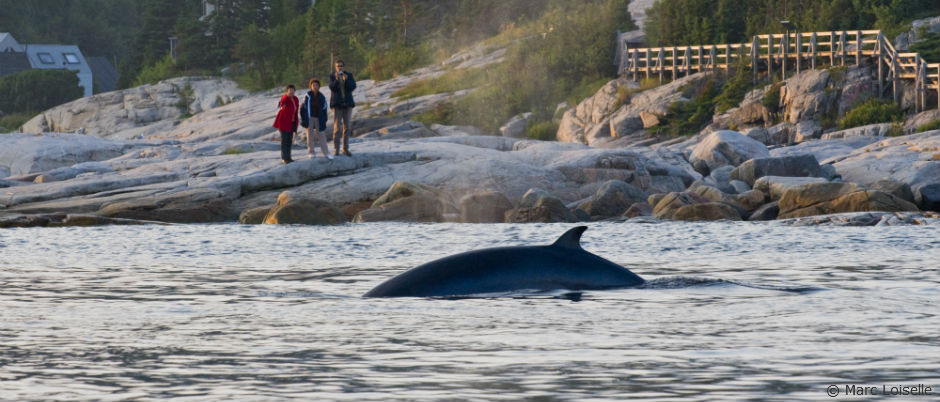
Belugas and minke whales are among the species you can observe from the shore. The best places to see these marine mammals in the Tadoussac area are Pointe-Noire (Baie-Sainte-Catherine) and Pointe-de-l’Islet (Tadoussac), at the mouth of the Saguenay Fjord, as well as around Tadoussac Bay, from the top of the Tadoussac dunes (Saguenay–St. Lawrence Marine Park) and around the mouth of the Sainte-Marguerite River (Parc national du Fjord-du-Saguenay). To learn more about marine mammals, be sure to also plan a visit to the Marine Mammal Interpretation Centre (CIMM) in Tadoussac.
A little further east, you can see whale spouts and backs (fin whales, humpbacks) just off Cap de Bon-Désir. Minke whales often swim quite close to the shore, while blue whales, fin whales and humpbacks sometimes feed just a few hundred metres from the coast.
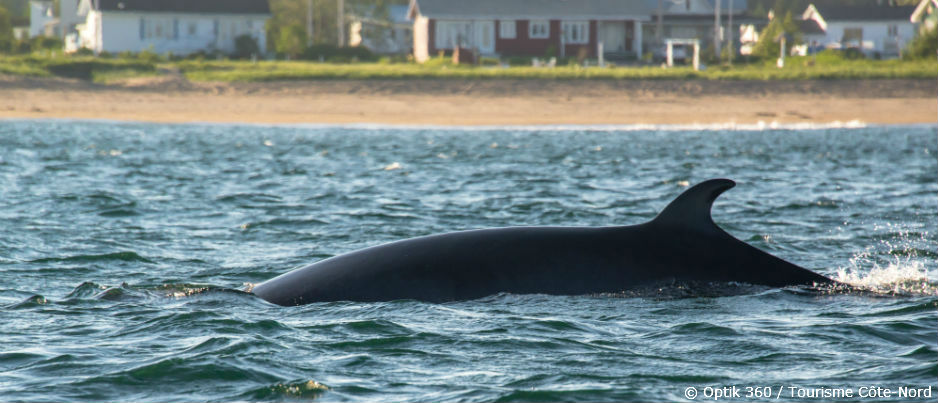
Whales are scattered all along the coast of Côte-Nord, including along the Lower North Shore, from Les Escoumins to Blanc-Sablon, with a few clusters between Rivière-au-Tonnerre and Havre-Saint-Pierre (including in the Mingan Archipelago National Park Reserve, around Anticosti Island and in the Blanc-Sablon area). In June, you can watch minke whales feed near the shoreline along Route 138, about 70 km (45 mi.) east of Sept-Îles.
Bas-Saint-Laurent
For a whale-watching experience just two hours east of Québec City or four hours east of Montréal, Rivière-du-Loup is the place to go. For starters, belugas can be spotted swimming along the south shore every day from the marina and ferry wharf. You can also see belugas and minke whales around Île aux Lièvres (Hare Island). Keep your eyes peeled as you hike on this island!
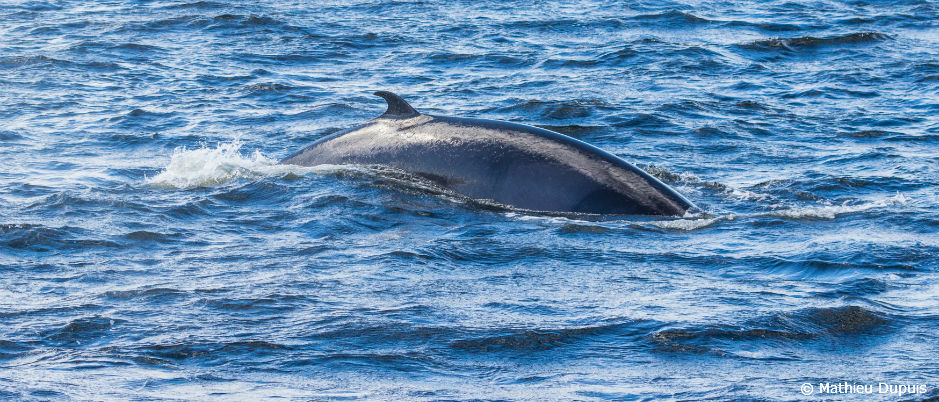
Croisières AML offers two daily excursions from Rivière-du-Loup aboard the AML Levant to observe whales in the Saguenay–St. Lawrence Marine Park. On board, a naturalist guide will share a host of information about the species you encounter.
Please note that these excursions departing from Rivière-du-Loup are temporarily unavailable.
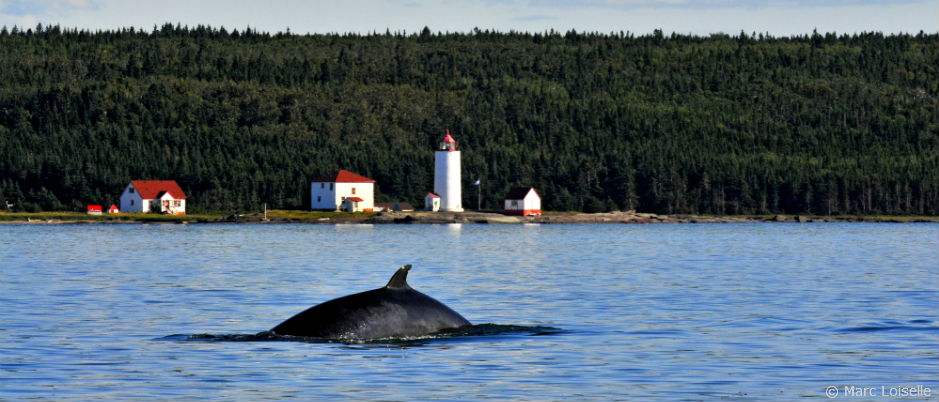
Île Verte (Green Island) is another great whale-watching destination in the region. During the summer months, minke whales feed just a few metres from the island’s western point, as do belugas and harbour porpoises. You can also spot minke whales and sometimes fin whales and humpbacks near the Île Verte Lighthouse. Nearby, on the island’s south side, you can learn all about the anatomy of whales and dolphins at the Musée du Squelette (Skeleton Museum).
Gaspésie
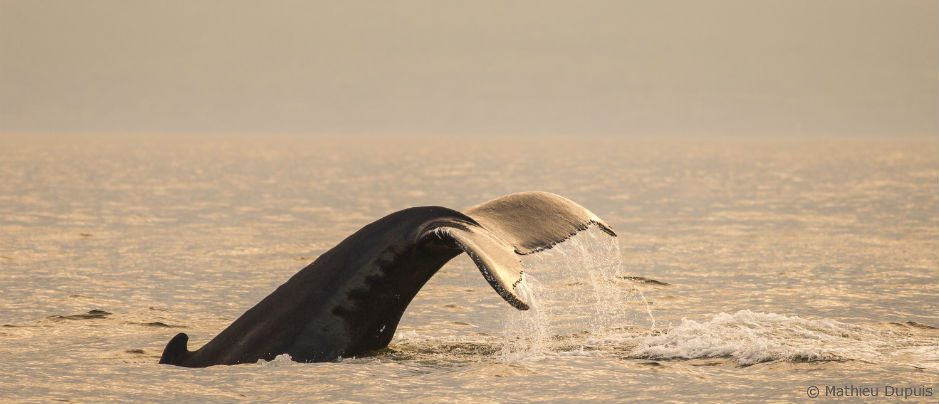
The easternmost tip of the Gaspé Peninsula, from Gaspé to Percé, is one of the best places in Québec to admire marine mammals. Forillon National Park and Parc national de l’Île-Bonaventure-et-du-Rocher-Percé are both excellent sites for watching whales and Atlantic white-sided dolphins. You can spot the blows of fin whales, humpbacks and occasionally blue whales from Forillon National Park (Cap-Gaspé, Cap-Bon-Ami, Cap-des-Rosiers, Gaspé Bay) and Bonaventure Island.
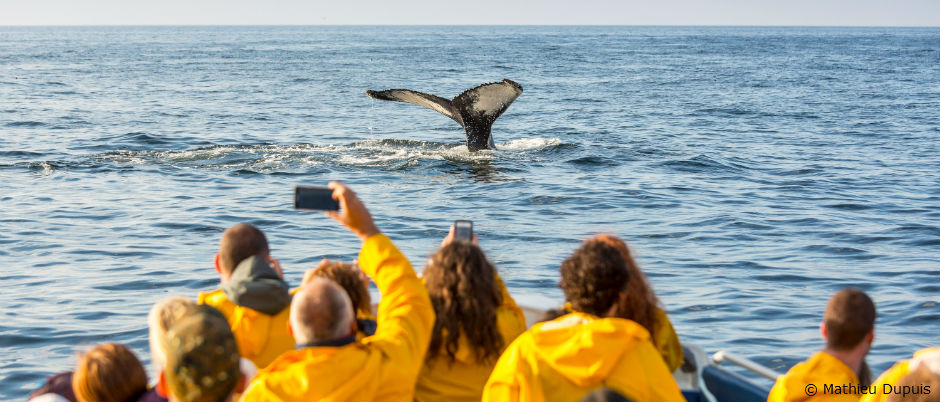
The waters of the Gulf of St. Lawrence are ideal for observing great whales such as blue whales and spectacular humpbacks. Several tour companies offer whale-watching excursions departing from Forillon (Croisières Baie de Gaspé), the Gaspé marina (Cap Aventure) and Percé (Croisières Julien Cloutier). On board, a guide will share a host of information about these impressive animals and answer all your questions. As a bonus, you can also admire the surrounding coastal scenery from the water. If you visit Bonaventure Island, keep your eyes peeled! You may encounter a few minke whales and white-sided dolphins on the boat ride from the Percé wharf to the island.
Be sure to also keep your eyes on the horizon as you drive through the La Haute-Gaspésie and La Matanie. If you’re lucky, you may spot the back of a whale emerging from the sea!
The maritime regions of Québec are by far one of the best whale-watching destinations in Canada as well as the world. From land or by sea, these regions offer a multitude of opportunities to observe these immense marine mammals. Start planning your trip today!
(1) comment
Brenda Robinson
I loved this article! I did visit Tadoussac Bay one year and loved it! The humpbacks put on a royal show for us, so much breaching! I want to return soon! Love Quebec, so beautiful!
Thank you very much Brenda for taking the time to share a bit of your experience. I'm glad you had a nice trip and the whales impressed you! Tanya